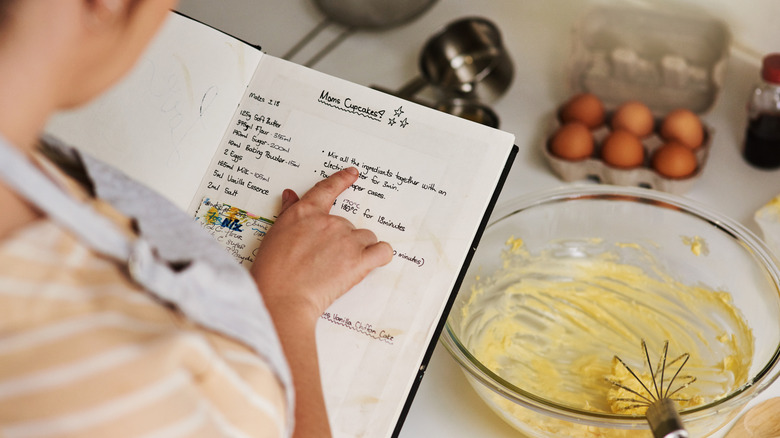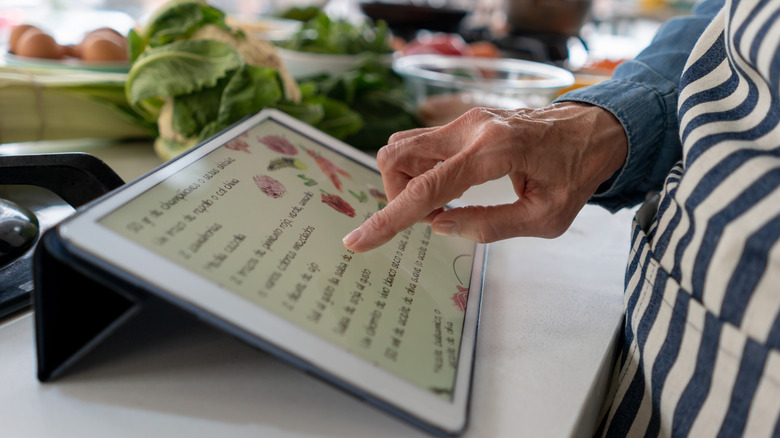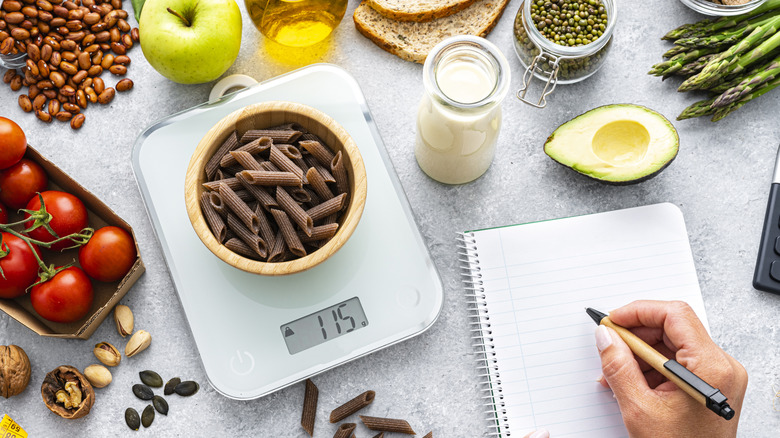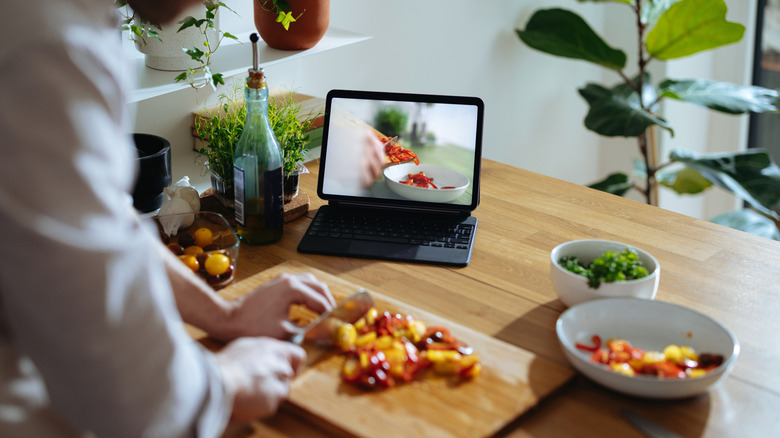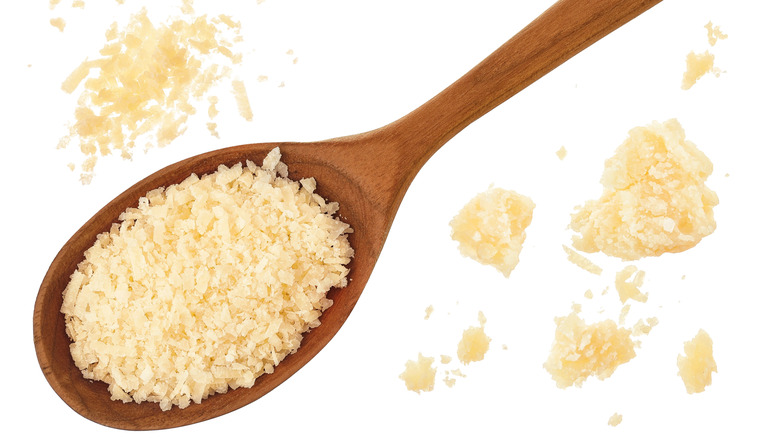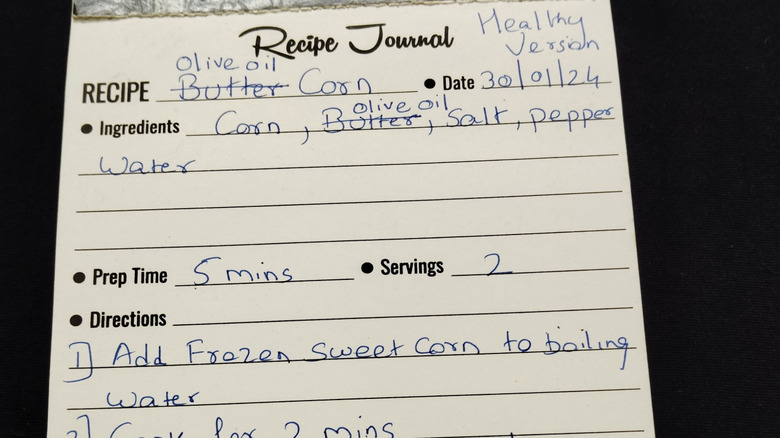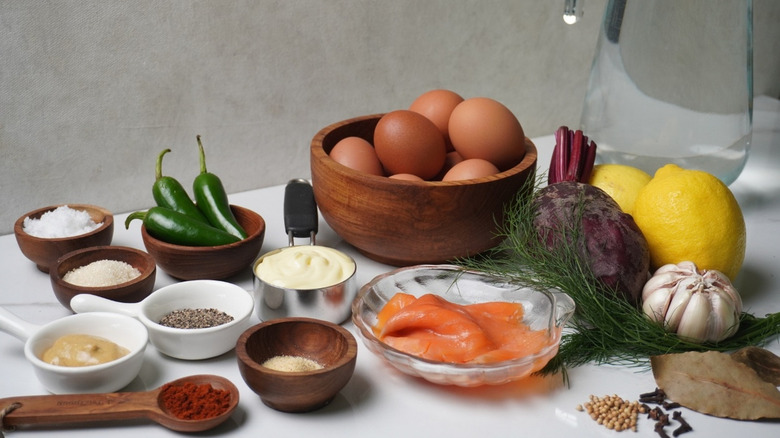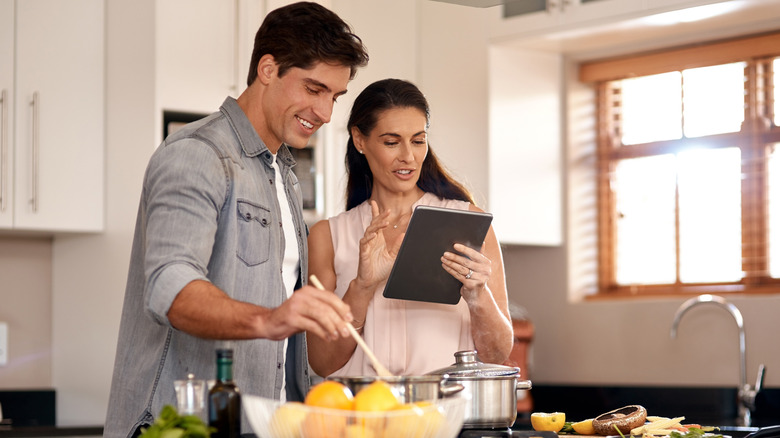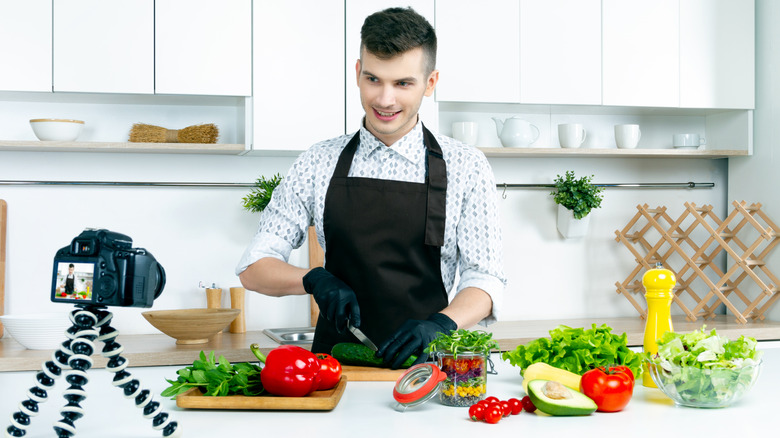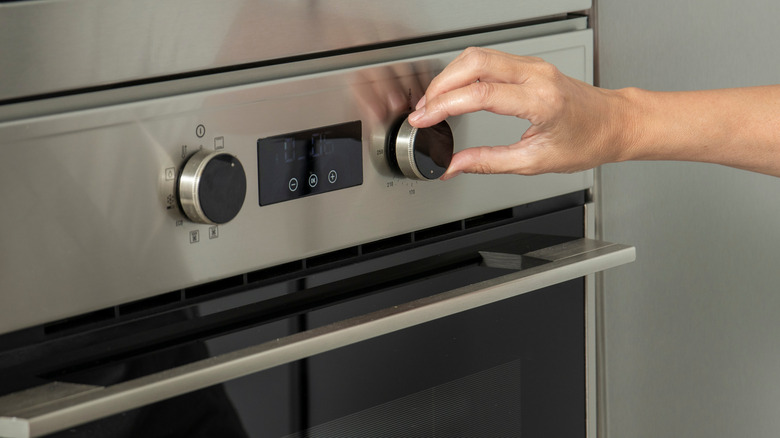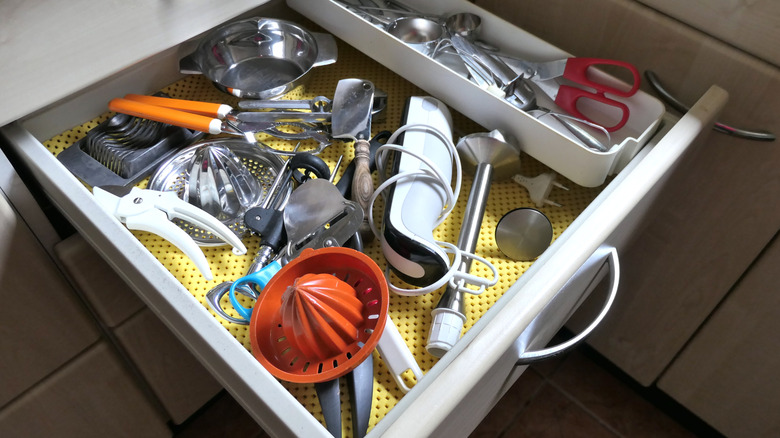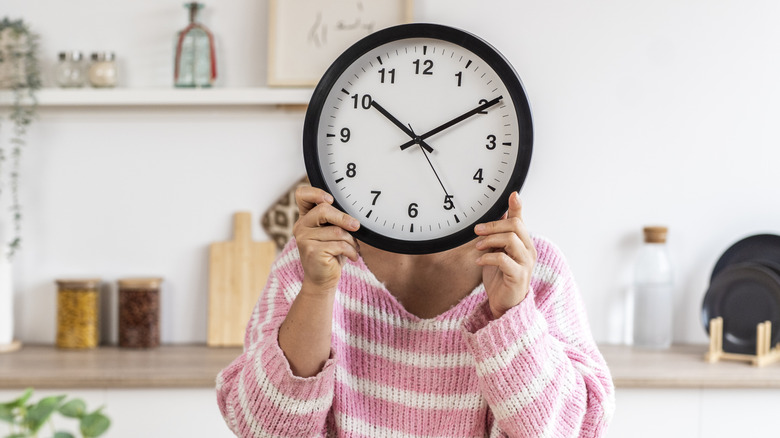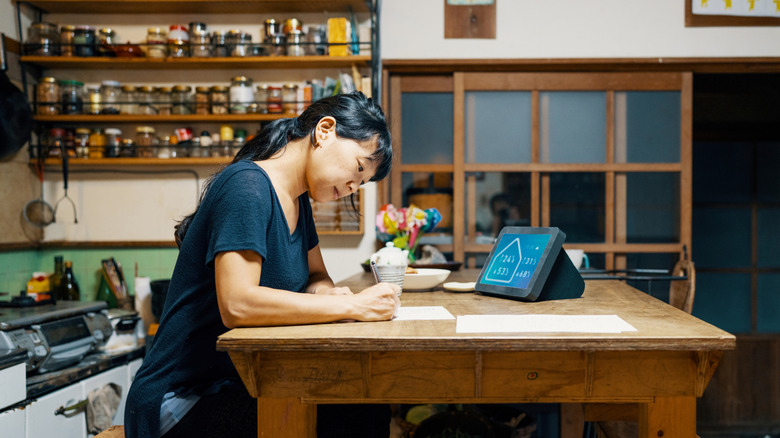12 Recipe Reading Mistakes That Are More Common Than You Think
I have a confession. Even after 15 years as a chef and restaurant owner, I still make mistakes when reading recipes. And yes, spoiler alert, chefs use recipes, too. Whether it's for inspiration or instruction, there's no shame in the game.
Recipes are essential tools. But if you bumble your way through them, giving them only a cursory once-over (or not at all), and don't take the time to prep properly, even the easiest of recipes could end up with a dish in the bin. There's some consolation, though. Most of these mistakes are more common than you think, and you are not alone.
So in the spirit of honesty and kitchen camaraderie, let's go through some classic recipe-reading red flags together and see how many you (and I) are guilty of. Because at the end of the day, everyone wants to feel like a domestic god or goddess in the kitchen. And getting there is easier than you think.
Not reading through the entire recipe first
It may sound overly simple and a bit of a "duh" moment, but let's say it together: You need to read the entire recipe first. Before digging through your pantry. Before pulling out that crepe maker or slow cooker. Even before heading out to buy ingredients. Take a few minutes to sit down and read the whole recipe from start to finish. Then read it again. This time, make notes — what needs to be bought, what equipment is required, are there any unfamiliar terms or techniques that need a quick Google or video tutorial?
A good recipe should give you all the essential information: ingredients, measurements, cooking time, temperature, methods, and serving suggestions. Following these in a clear, logical order goes a long way toward success.
Even if you're an experienced cook or baker, there's a need for a clear overview of what to expect before diving in. Does the butter need to be at room temperature before creaming it with sugar? Is the grill already preheated for those steaks? See what I mean? Instead of scrambling around at the last minute, take a moment to read, prep, and walk into the kitchen with confidence.
Incorrectly reading measurements
There's many a slip between the cup and the lip, and in the kitchen, between a cup and... another cup. Ingredient measurements are one of the most critical parts of any recipe, especially when it comes to baking, but honestly, even for cooking. It's easy to take certain measurements for granted, but every word, every unit, needs to be treated carefully.
First, the obvious issue: Weights and measures vary across countries. In the United States, recipes rely on cups and spoons. In the United Kingdom, Australia, and much of the rest of the world, the metric system rules. There's no single global standard, unfortunately, so your best bet is to keep a reliable conversion chart handy and refer to it often.
Things get trickier when you realize that liquids and solids need to be treated differently. An ounce of butter is not the same as an ounce of milk. Volume and weight aren't interchangeable unless you know the density of what you're measuring. Some dry ingredients are listed by volume, others by weight, and casually switching between the two can completely throw off your results. If you're using a recipe written in a system that you're not familiar with, whether U.S., metric, or imperial, take the time to convert all the ingredients before you begin. Better yet, invest in a good kitchen scale. It's one of the most useful tools you'll own and the simplest way to avoid confusion and get consistent results.
Misunderstanding cooking terms
On the one hand, editors say people are more passionate about cooking than ever before. On the other hand, they'll tell you many readers don't actually know much about cooking, and to keep things easy. In fact, cookbook writers are often told to avoid using too many cooking terms or techniques and keep it all super simple. I call nonsense on that. If you're into cooking, there's a bare minimum you've got to commit to. It's not asking for much — just a quick read or YouTube search to understand the difference between dicing and slicing, or what sautéing or deglazing means. That's basic stuff.
Yes, more advanced techniques like sous vide or velveting take a bit more time and curiosity. But misunderstanding everyday terms is entirely avoidable. Once you get the basics down and learn the lingo, recipes start to make a whole lot more sense. There's a wealth of information online to help. Don't be intimidated. And when in doubt, ask. Search engines, forums, and videos can give you definitions, demonstrations, and context. Understanding the method behind the (seeming) madness helps you cook more confidently and with better results. So the next time a recipe calls for blanching, broiling, or braising, you won't be guessing, you'll be in there — cooking your heart out.
Ignoring commas and adverbs
Commas aren't just punctuation; they're game changers. When a recipe says, "two spoons of cheese, finely grated" or "two spoons of finely grated cheese," do you understand that they imply two different things altogether? The placement of a comma in the ingredient list indicates what has to be done to the ingredient after the comma.
A comma in an ingredient list indicates what needs to be done once the item has been measured. For example: "Butter, melted and cooled," means measure the butter first, then melt and cool it, or "onions, diced and sautéed," means take your measured amount of onion, then dice and sauté it. But if there's no comma, the prep comes first. So, "two tablespoons of finely grated cheese" means grate first, then measure. These small details have a big impact.
Now, onto adverbs. Those little words — "gently," "slowly," "thoroughly" – may seem easy to gloss over, but they matter. Gently folding is not the same as vigorously stirring. These cues guide you to the right texture, consistency, or timing. Slowly caramelise your onions and you'll get rich, sweet depth. Quickly cook them, and you'll end up with something else entirely. Adverbs can also hint at technique, pacing, and professional tricks that elevate your cooking. Yes, some recipes include vague terms like "sometimes" or "often," which are frustrating. But over time, and with practice, you'll learn how to read between the lines.
Making your own substitutions
We've all been there — excited to try a new recipe, only to realize we're missing an ingredient. And honestly, a trip to the store feels like too much hassle. Can't you just swap it out for something else? Well, sometimes yes, but other times, no. Every ingredient in a recipe has a specific function. The person who wrote it (hopefully after lots of trial and error) has already tested alternatives and fine-tuned the process. How and when each ingredient is added affects the final dish's taste, texture, aroma, and appearance. Swap one thing for another without caution, and you might end up with something that's completely different from what was intended.
Baking, in particular, is more of an exact science. Even small changes can throw off the entire outcome. It might sound intimidating, but it's really a matter of understanding the principles behind the ingredients. As you gain experience in the kitchen, your confidence will grow. You'll start to instinctively know what can be swapped and what can't.
If you're already there, congratulations, now is the time to experiment, but still within a framework. Once you understand each ingredient's role and make sure your substitute behaves in the same way, substitutions become less risky, and honestly, a lot more fun. The first time you make a recipe, follow it exactly. After that, you'll have a better feel for how everything comes together, and then you can safely start experimenting with small substitutions.
Ignoring the importance of mise en place
In the mid-19th century, Auguste Escoffier revolutionized the culinary world. A former soldier, he brought military precision and order to chaotic kitchens, introducing systems like the brigade de cuisine and the simple but powerful practice of mise en place.
So, what is mise en place? It means "everything in its place" in French, and its main purpose is to have everything ready before you start cooking, baking, or assembling your dish. Committing to this practice, even in everyday cooking, can change your life. I don't say that lightly. If you've ever found yourself juggling pans, wrestling with dishes, hunting for ingredients, and chopping as you go, you know how chaotic the kitchen can get. Mise en place is the answer. Yes, it takes a little extra prep time upfront, but it's a foolproof way to work smoothly and confidently.
It means reading the recipe, gathering all your equipment, from knives to bowls, getting your oven preheated, and pre-measuring and prepping ingredients. This can include trimming meat, washing produce, grinding spices, toasting nuts, and chopping or dicing everything in advance. Now, while some cooks are fine not doing everything down to the last bowl, you do you. If you function better with a little laissez-faire fare, go for it, but I urge you to try mise en place, from start to finish, at least once before dissing it completely.
Not having the recipe on hand throughout the cooking process
By now, you know the importance of reading the recipe thoroughly. But, let me ask you to do another small thing, so hear me out. Whether it's your first, second, or even third time making a dish, it is not expected that you remember every step or detail. We've all got enough on our plates, literally, without trying to memorize details like when and how much lemon juice to add or how finely you should dice the onions. That's why keeping the recipe nearby while you cook or bake is essential. Whether you're following it to the T or improvising with flourish, having it in view is a must.
I do, however, want to be clear — I'm not telling you to be so rigid that cooking becomes joyless. Treat a recipe as your starting point, not the finish line. Sure, you must read it carefully and pay attention to the details, but you must also observe, smell, taste, and most importantly, make mistakes, as you go. Getting better at cooking means doing all of this. There's no point in watching videos or reading cookbooks all day. Until you jump in and get your hands dirty, you won't improve. The point of cooking and baking is to immerse yourself in something that makes you happy and makes others happy with the fruits of your labor. At the end of the day, if it's not fun, why do it?
Trusting viral videos instead of professional bakers and chefs
Social media platforms like Facebook, Instagram, TikTok, YouTube, and Twitter are huge sources of culinary inspiration. Over 70% of adults use these platforms to find recipes according to a Market.US report, and cooking is the most popular out of all the types of content created by influencers on social media. Unlike cookbook recipes that are carefully tested and retested with countless tweaks, viral recipes only need a catchy hook, or sometimes even controversy, to go viral.
Viral recipes are unpredictable, however. They can be surprisingly simple or oddly complicated, but they always have something that makes people think they can easily replicate that. Sometimes, it's less about who cooks best and more about who grabs the most attention by playing the algorithm. Relying on viral videos over professional chefs or experienced cooks is, according to many, a huge mistake. Recipes on social media are often pared down for simplicity or visual appeal and rarely capture the true nuances of a dish. Plus, while photos might look tempting, the instructions can sometimes be vague, incomplete, or even unsafe.
Personally, I stick to a few trusted websites that consistently deliver good results. A good rule of thumb: Check the ratings and comments. If plenty of people say they tried the recipe and it worked, that's a good sign. But if a recipe has no comments or reviews, treat it as a red flag.
Ignoring preheating and other prep instructions
It's understandable to want to rush into a recipe and churn out a marvelous dish. But rushing into anything rarely helps. Beyond mise en place and gathering ingredients, it's as crucial to read any prep instructions carefully. Does the recipe ask you to preheat the oven or grill? Are there specific tools you'll need handy, like piping bags, choppers, or blenders? Taking a few extra minutes before you start to lay everything out makes a big difference.
When it comes to preheating ovens, it's crucial to follow the instructions carefully. Baking in an oven that isn't preheated can cause uneven cooking. Your food could end up burnt or raw in the center. When you preheat an oven, it ensures a consistent temperature for optimal baking.
According to the experts, ovens vary considerably in terms of temperature readings. The way ovens function is by cyclically turning on and off to maintain a regular temperature. When doing so, the majority of oven models will vary by some number of degrees during the cooking or baking process. This is absolutely normal and just requires getting used to the idiosyncrasies of your particular model. For example, my oven heats more on the top right side, and to offset this, I need to swap my cakes around to ensure uniform baking. This understanding only comes after using the appliance regularly. An oven thermometer also helps and is an essential tool if you bake regularly.
Using the wrong equipment
Using the wrong equipment, or even just different equipment than what a recipe calls for, can have a bigger impact than you might expect. Everyone's ovens and stovetops behave differently, so it's no surprise that the same recipe can turn out very differently from one kitchen to another. Beyond ovens, factors like your stove's flame intensity, the type of blender or mixer you use, and even the kind of pans or baking dishes can change the final result. The test kitchen, where a recipe is developed, is a controlled, neutral environment designed to deliver consistent results. Your kitchen is full of variables.
As one Redditor put it, "Appliances vary, so the timing is always an estimate. Other factors come into play, like the temperature of ingredients before cooking, differences in cookware, or the size of the food. There are just too many variables." Some recipes rely on specific tools to work properly. For example, certain doughs require a stand mixer to develop gluten correctly, and delicate decorations often need a piping bag for precision. Using a substitute tool or skipping a step because you don't have the "right" equipment can change the texture, structure, or appearance of your dish, sometimes causing it to fail altogether.
The key is to understand what each piece of equipment does, and why the recipe specifies it. When you know that, you can make informed decisions — sometimes improvising successfully, but other times knowing it's best to stick to the original tools.
Not leaving enough time
One common complaint in recipe forums is how prep time is often underestimated or overlooked altogether. As one Redditor complained, "Recipes seem to assume you have all your ingredients out, chopped, and in a bowl before you start. Prep time varies depending on organization and knife skills, but it always feels underestimated." Chris Kimball, editor of Cook's Illustrated, cut straight to the point in a 2010 interview with Slate, dismissing the idea that recipes can be timed with precision: "Thirty-minute recipes are never 30 minutes," he said bluntly. "It's marketing."
So, what's the takeaway? Permit yourself to take as much time as you need to do the recipe properly. Slow down, especially when trying something new, and pick a day when you have the bandwidth to focus. Remember, timing is personal. How you like your steak or pasta will affect cooking time, as will your pace in the kitchen. This is your show, and you get to set the rules. By thinking through the recipe — prepping ingredients, planning each step — you'll arrive at a realistic estimate of the time you need. And that makes cooking less stressful and a lot more enjoyable.
Not making notes for next time
One of the greatest joys of a physical cookbook or notebook is being able to jot down notes for yourself. And no, apps can't replace that feeling. That said, you could always compile digital notes for all your favorite recipes and be as (if not more) organized.
Whenever you make a recipe, no matter how many times, it's incredibly helpful to write down what worked, what didn't, and what you might try differently next time. Maybe an ingredient swap, a tweak in cooking time or how you served the dish, and how many it fed. You'll be surprised how useful these little observations are the next time you reach for that recipe.
These notes not only improve your cooking, but they can also inspire new versions that carry your unique touch and preferences. Over time, you'll build a treasured collection of recipes tailored just for you– a collection that, who knows, you might one day pass down to the next generation of ardent cooks and bakers.
